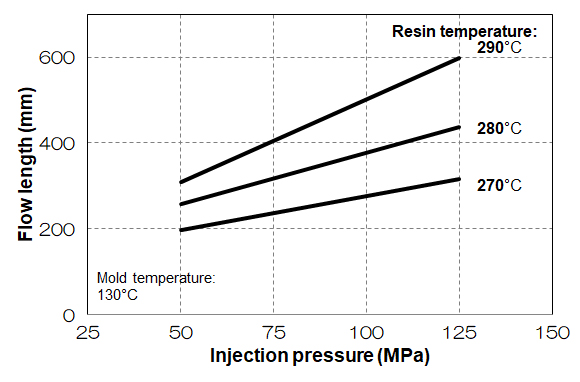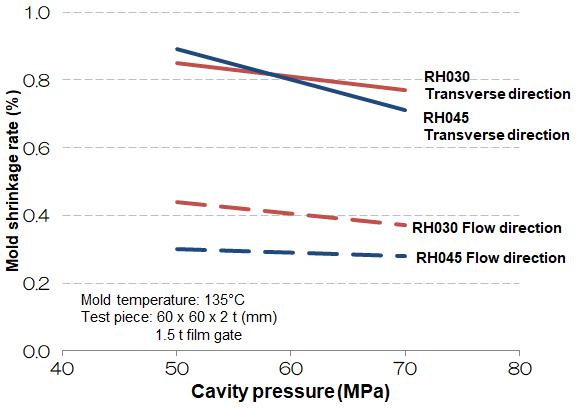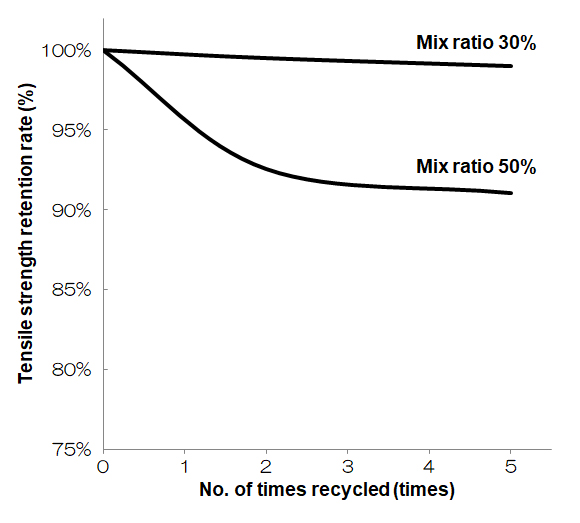Home > Technical Support > Molding Technology > Molding Technology for RENATUS(R) PET
Molding Processability
3. Molding Processability
3. 1 Flowability
|
RENATUS® PET is a molding material that has excellent flowability. One method of evaluating flowability is the flow length measurement test that uses an injection molding machine. Figure 3-1 shows an example of the dependence of the C3030FA bar flow length on the molding conditions.
|
|
|
|
Figure 3-1. The Relationship between the C3030FA Bar Flow Length (thickness: 2 mm) and Molding Conditions (resin temperature and injection pressure)
|
3. 2 Mold Mold Shrinkage
|
RENATUS® PET is a crystalline plastic, and in the case of grades reinforced with glass fiber, the flow inside the cavity causes the glass fibers to be oriented in the direction of flow. As a result, with the direction of flow, the mold shrinkage rate is lower than the direction at a right angle to the flow, and anisotropy is seen in the shrinkage rate, so deformation of molded articles becomes a problem. The shape of the molded articles and design of the gate are important as countermeasures against deformation. Further, in general, the mold shrinkage rate is affected by molding conditions. Figure 3-2 shows an example of mold shrinkage rate.
|
|
|
|
Figure 3-2. The Dependence of the Mold Shrinkage Rate of RENATUS® PET on Cavity Pressure
|
3. 3 Recycling
|
Recycled materials are affected by their thermal history more than virgin materials, so their molecular weight is low, and mixing in a large amount of such materials is a cause of decreased strength. In particular,
be sure to avoid the reuse of molded articles and runners that have undergone hydrolysis or thermal decomposition.
|
|
|
|
Figure 3-3. Recycled Material Mix Ratio and Tensile Strength Retention Rate (CN9030)
|
|
Table 3-1. Composition of Mixed Items When 30% Recycled Items are Mixed with New Pellets
|
No. of times
recycling repeated |
New pellet |
Items
recycled
2 times |
Items
recycled
2 times |
Items
recycled
3 times |
Items
recycled
4 times |
Items
recycled
5 times |
| (%) |
(%) |
(%) |
(%) |
(%) |
(%) |
| 1 time |
70 |
30 |
|
|
|
|
| 2 times |
70 |
21 |
9 |
|
|
|
| 3 times |
70 |
21 |
6 |
3 |
|
|
| 4 times |
70 |
21 |
6 |
2 |
0.8 |
|
| 5 times |
70 |
21 |
6 |
2 |
0.6 |
0.2 |
|
|




